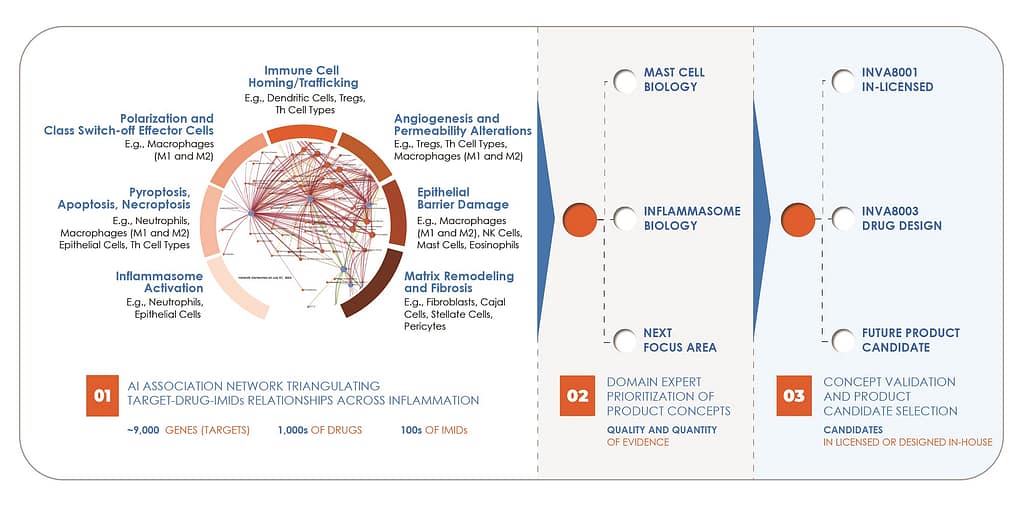The Science
Decoding the Complexity of IMIDs
At Invea our vision is clear: to develop safe and effective oral small molecule therapies that target the common pathways of IMIDs. We understand that IMIDs involve a complex cascade of events, from the initial inflammatory triggers to eventual tissue damage and fibrosis. Our approach is driven by the belief that addressing the dysregulated inflammatory response at its core presents a remarkable opportunity for impactful treatments.

IMIDs are a diverse group of diseases that share common inflammatory pathways and genetic factors. At Invea, we are dedicated to unraveling the intricate science behind these conditions. Our focus areas include:
Mast cells are innate immune cells that play a critical role in chronic inflammation. These cells are widespread throughout the body, including the gastrointestinal tract, liver, and skin, where they help maintain epithelial function and tissue integrity. However, dysregulated mast cell activation can lead to chronic inflammation and the development of IMIDs. We are committed to understanding and targeting mast cell activation to provide effective therapies.
Inflammasomes are danger-sensing receptors and crucial components of the innate immune system that initiate and control inflammatory responses. Inflammasomes consist of sensor molecules, adaptor proteins like ASC, and pro-caspase-1. Our research explores their role in initiating and controlling inflammatory responses across various IMIDs.
With cutting-edge technology and a passionate team, we aim to leverage the science of IMIDs and pioneer innovative treatments.


